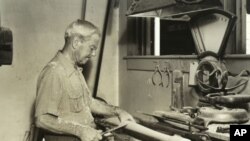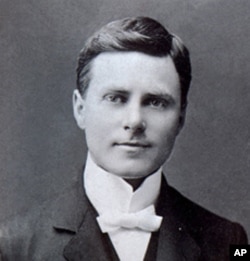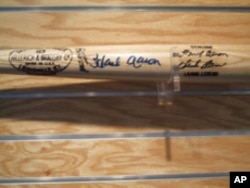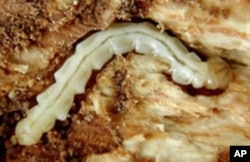The successful immigrant story is one of the touchstones of American culture.
For 126 years a family of German immigrants has been making a product that's become an icon of American sports.
It was in Louisville, Kentucky, along the banks of the Ohio River, that the Hillerich family opened a wood turning shop in 1855. Family patriarch J.F. thought there was money to be made shaping bed posts and butter churns.
His 16-year-old American-born son, Bud, was an avid sportsman. He wanted to make baseball bats and an American tradition was born.
Louisville Slugger
"We make 2,500 bats here a day on average," says P.J. Shelley, spokesperson for the company now known as Hillerich and Bradsby. "During peak production, around spring training time, we can make as many as 5,000 bats a day. We make 1.8 million wood bats here every year. Fortunately for us the young son prevailed and we're not making butter churns here any longer."
After being introduced in the late 1880s, the bat was quickly dubbed a Louisville Slugger, and has been a favorite of American baseball players for more than a century.
"I think Lou Brock, the great Hall of Famer for the St. Louis Cardinals said it best when he said, 'If you didn't have a Louisville Slugger in your hands, then you weren't playing baseball,'" says Shelley. "I mean when people think of baseball bats, or certainly wood baseball bats, they're thinking of a Louisville Slugger."
Bat treasures
Danny Luckett's been turning bats at Hillerich and Bradsby for four decades.
A product that once took 15 minutes to turn by hand now pops out of a computer controlled lathe every few seconds. But every bat still has to pass Luckett's inspection before the Slugger name gets burned on.
Nine-thousand master copies of the company's more famous bats are kept in a special vault. Luckett knows many of them by sight, including the model used to make Babe Ruth's bat.
"When Babe Ruth would order his bats, they would come and get this out of the model room," says Luckett. "Figure out what weight he wanted, figure out what weight it took to make the bats and turn his bats off of that one."
The Yankee's home run king - known as the Sultan of Swat - is just one of the 8,000 professional baseball players Hillerich and Bradsby contracted with over the years. That allows the company to sell autographed copies of the bats the pros use to the general public.
Given the number of bats players at all skill-levels go through in a baseball season, Luckett never has to worry about staying busy.
"Everyday-players will probably go anywhere from, 12 to 14, 15 dozen bats in a season," he says. "When they get them, they go through them and they pick out the ones they want for the game, and they pick out the ones they want for batting practice."
Looking ahead
Hillerich and Bradsby continues to innovate, recently developing a line of hi-tech sports gloves.
Marketing Director Vickie Boisseau says special pads fill in the low spots on the palm and finger joints, giving players a better grip with less strain.
"The pads are going to pull that stress and strain away from your joints," says Boisseau. "You're going to be able to swing the club with a lot more ease where you're not putting a death grip on it."
The Louisville Slugger has risen to the level of cultural icon. Mentions of the bat are common in American books, movies and popular music. Singer Carrie Underwood referenced it in her hit country song about using a slugger to bash a cheating boyfriend's car.
Encroaching threat
However, a tiny beetle now threatens to destroy the iconic baseball bat.
The Emerald Ash Borer is slowly spreading across North America. The invasive Asian Beetle destroys the White Ash trees sluggers are traditionally made from. While the bug hasn't reached the Ash Forests owned by Hillerich and Bradsby yet, company spokesperson P.J. Shelley says the company is keeping a close eye on research aimed at stopping the beetle.
"They've introduced a non-stinging wasp that's a natural predator of the Emerald Ash Borer, and we're kind of seeing how that, these experiments, go," says Shelley. "And maybe that's something that we can bring over to our forest, if and when the Emerald Ash Borer does ever come over there."
Baseball players - known in the sports world for their strong superstitions - would certainly mourn the loss of the original slugger.
But should the worst happen, the slugger name will survive. Hillerich and Bradsby now produce a popular line of Aluminum bats and a second line made of widely available Maple wood.













